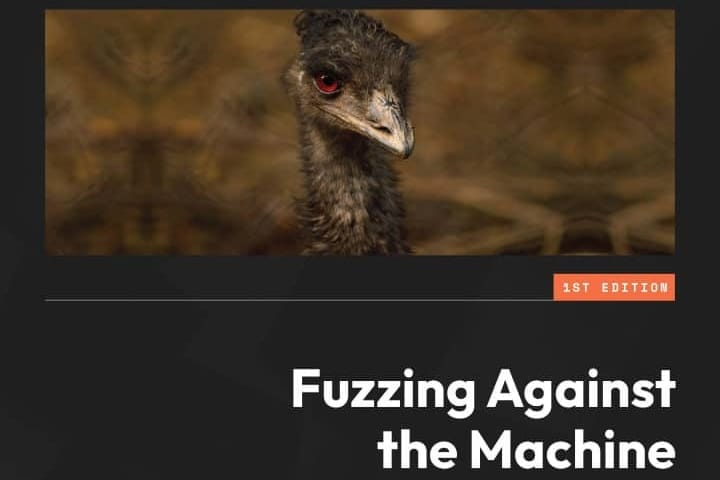
QEMU Internals and Fuzzing: From IoT to iPhone // Antonio Nappa
Virtual | Oct 26-31 | 32 Hours
BOOK NOW📅 Lectures on October 26, 27, 28, 29, 30, 31
❗️Please check the detailed schedule for your time zone.
ABSTRACT
In QEMU Internals and Fuzzing: From IoT to iPhone, participants will learn about the fundamentals of emulation and fuzzing, how to emulate a custom device in QEMU from the ground up, and how to instrument it for fuzzing and vulnerability research.
We will dive into QEMU, one of the most powerful software tools designed for emulation and fuzzing, to gain a deep understanding of its architecture and design principles. We will cover machine types, hardware emulation, and how to write your own platform to emulate and fuzz - from IoT devices all the way up to an iPhone!
Students will use AFL++, Hongfuzz and some handcrafted examples for testing large software systems for vulnerabilities. We will apply persistent fuzzing, mutational fuzzing and evolutionary fuzzing on real world firmware examples including Mobile Phones, Fitness devices, Media Players, Networked RTOS based systems, peripheral and bus fuzzing techniques such as USART, UART.
The class features several hands on exercises where participants will gain an understanding of memory vulnerabilities in IoT and embedded devices and how to write fuzzing harnesses, as well as managing responsible disclosure and vulnerability mitigation.
By the end of the course, participants will have a unique set of skills and knowledge from different fields such as emulation of custom embedded systems, instrumented fuzzing, and dynamic analysis, all with a single goal: to find security vulnerabilities.

QEMU Internals and Fuzzing: From IoT to iPhone // Antonio Nappa
Virtual | Oct 26-31 | 32 Hours
INTENDED AUDIENCE
- Researchers and developers working with low level embedded and IoT and embedded systems.
- Organisations that want to emulate complex closed source mobile devices.
- Vulnerability researchers interested in implementing custom emulation and fuzzing harnesses for proprietary IoT and embedded devices.
- Engineers who maintain end-of-life systems in mission-critical environments.
- Hackers :)
KEY LEARNING OBJECTIVES
- Fundamental concepts of emulation and fuzzing as useful tools in vulnerability research
- QEMU architecture and design principles, including machine types and hardware emulation, instrumentation and fuzzing harnesses.
- QEMU execution modes and performance optimization using Panda or Avatar2
- Fuzzing techniques, harness injection into proprietary firmware
- Understanding differences: pros and cons with respect to virtualized i.e. Corellium™ emulated devices to explore pitfalls, differences, and advantages of full-system emulation.
- Apply emulation and fuzzing techniques to real-world targets:
- IoT devices, Media Players, Fitness devices, Real-Time Tasks
- Knowledge of peripheral and bus fuzzing such as USART, UART, routers, device sensors
- Apply emulation and fuzzing to closed source devices such as iPhone 11/iPod2G on QEMU. Understanding kernel patching, device modeling and fuzzing harnesses.
- Identify memory vulnerabilities and write harnesses, and understand responsible disclosure and vulnerability mitigation
- Experience first hand how fuzzing+emulation are the game changer for vulnerability research
COURSE AGENDA
Part 1: Introduction
- Static analysis
- Binary lifting
- From lifting to execution
- Examples, P-Code, Intro to TCG
- Hands-on → Kunai, disasm and lift
- Hands-on → Kunai, IR analysis
- TCG Internals
- Hands-on tracking code through the TCG: registers
- Hands-on tracking code through the TCG: jumps
- Hands-on tracking code through the TCG: Code coverage
Part 2: Introduction to QEMU architecture and design principles
- Overview of QEMU components and their interactions
- Understanding QEMU machine types and hardware emulation
- QEMU execution modes and performance optimisation
- Hands-on exercise: Building and customising a QEMU machine type for the ST Nucleo L452RE board
- Case studies of successful emulation and fuzzing in vulnerability research (e.g., IoT devices, web applications)
- Hands-on exercise: Write clock module for a ST Nucleo L452RE QEMU board
- Hands-on exercise: Write UART module for the ST Nucleo L452RE QEMU board
- Hands-on exercise: Finding and exploiting vulnerabilities in our RTOS based firmware on the ST Nucleo L452RE board
- Hands-on exercise: Writing the harness for a specific component
Part 3:
- Hands-on Pebble Watch on QEMU (STM32)
- RebbleOS code analysis
- Board implementation analysis
- Fuzzing Harness
- unused SVC-SWI slots
- Checking crashes
- Triage and exploitability
- The Las Vegas tale:
- Accidentally finding a 0-Day in RebbleOS
Part 4:
- Closed-Source Fuzzing: iPhone 11 & iPod touch 2g
- Featuring the excellent work of Ntrung, Visual and Martijn de Vos
- Approaching closed-source firmwares
- Intricacies of iOS kernel, NAND, ROMs etc
- Custom middle-age toolchains (for iPod touch)
- iPhone11 restore → patch → stitch → redo
- companion VM for restore
- overview of kernel patches
- overview of patching approaches
- Other approaches for closed source
- Finding code caves
- Injecting and testing code
- Re-writing the AFL harness
- Fuzzing Campaign
- iPhone 11+iOS14 fuzzing unveiled
VIRTUAL LAB ENVIRONMENT
- We will use Corellium™ for IoT running OpenWRT, leveraging virtual hardware to rapidly prepare and inspect the system.
- Virtualized setups offer lightning-fast operations such as rebooting, modifying the filesystem, and snapshotting, making them ideal for iterative development and debugging.
- However, to scale fuzzing effectively and in parallel, we will transition to a fully emulated setup once the fuzzing harness is prepared.
- This allows a direct comparison between virtualized and emulated environments, balancing speed and scalability.
- We'll demonstrate how to set up a fuzzing harness in emulated OpenWRT, using the speed of virtual hardware to our advantage during the initial preparation phase.
Knowledge Prequisites
C Programming, GDB and static analysis
System Requirements
Hardware
- Laptop capable of running Linux or macOS
- 16 GB RAM preferred
- Approximately 180GB of free disk space if you want to download the Docker container locally
Software
- Docker (if you wish to execute the labs locally) and VSCode (for Linux/macOS)
- Ghidra
YOUR INSTRUCTORS: Antonio Nappa and Eduardo Blazquez
Antonio Nappa, Ph.D is the Application Analysis Team Leader at Zimperium Inc. Before joining Zimperium he worked at Brave Software and Corelight.
Antonio has been active in the cybersecurity industry since 17 years. He has been a visiting scholar at UC Berkeley, EURECOM, VSB-TUO. He has published more than 15 papers in international peer-reviewed venues. He is also an inventor and a well recognized adjunct professor at UC3M Madrid.
He is co-author of: Fuzzing Against the Machine: Automate vulnerability research with emulated IoT devices on QEMU, Packt Publishing 2023.
Since the DEFCON 2008 Finals with the Guard@Mylan0 team, he never goes to sleep with a segfault.
Eduardo Blázquez, PhD. is a Compiler Engineer at QuarksLab
Since learning about security during his bachelor’s degree, he has focused on low-level security. He enjoys writing analysis tools in various languages such as Python, C, and C++.
His interests lie in the internals of fuzzing, compilers, and symbolic execution technologies. He has published papers related to Android ecosystem security and privacy, malware analysis, and tool development for Dalvik static
analysis.
Outside of computers, he enjoys martial arts, and learning about Japanese culture

Virtual Training Schedule
| October 26 | Sunday | Live Lecture (3h) |
| October 27 | Monday | Live Lecture (3h) |
| October 28 | Tuesday | Live Lecture (3h) |
| October 29 | Wednesday | Live Lecture (3h) |
| October 30 | Thursday | Live Lecture (3h) |
| October 31 | Friday | Live Lecture (3h) |
Session Timings
| 9 am - 12 pm | US Pacific Time |
| 12 pm - 3 pm | US Eastern Time |
| 4 pm - 7 pm | UK GMT |
| 5 pm - 8 pm | Europe CET |
Labs and Discord Channel
24 x 7 throughout the class, and beyond!
COUNTERMEASURE25: 60+ days before the event 75% of fees refunded; 45-60 days before event 50% refunded, less than 45 days 0% refunded. Course changes are allowed up to 14 days before event start (some restrictions will apply). Attendee changes can be accommodated up to 14 days prior to the event.
Note: In the event of a class cancellation, Ringzer0 will endeavor to offer transfer to another training at no additional charge.





